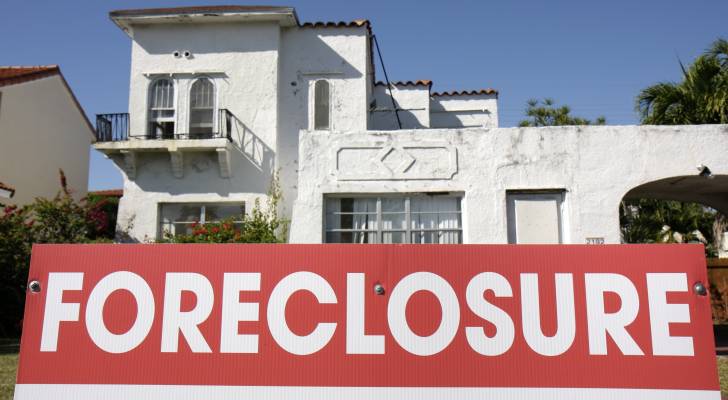The way you access your Social Security account has changed for millions of US retirees. Could you be at risk of missing out on your benefits?


There’s been a lot of fear mongering about the move from my Social Security to Login.gov, a new digital requirement introduced by the Social Security Administration (SSA). Does that mean you’re at risk of losing your monthly Social Security payments if you fail to move over to the new platform? Don’t miss I’m 49 years […]
‘Unfit for human habitation’: This Cedar Rapids building has finally been condemned after tenants lived without power or plumbing — what can you do if a landlord leaves your home to rot


Imagine authorities declared your home unlivable — and gave you just days to vacate. That’s the reality for residents of an apartment building in Southwest Cedar Rapids, Iowa — and now, according to KCRG-TV9, they’re struggling to find new places to stay. Don’t miss I’m 49 years old and have nothing saved for retirement — […]
Hundreds of Detroit-area auto workers temporarily laid off by GM and Stellantis amid economic uncertainty — how to protect your finances when you’re furloughed


Across Metro Detroit, hundreds of General Motors and Stellantis auto workers have been temporarily laid off this year. Don’t miss I’m 49 years old and have nothing saved for retirement — what should I do? Don’t panic. Here are 5 of the easiest ways you can catch up (and fast) Gain potential quarterly income through […]
My rich sister-in-law added her 10-year-old to her credit card to boost her credit score — should I feel bad for not doing the same for my kids?


Your sister-in-law is not alone: A number of TikTok influencers using the hashtag #generationalwealth are recommending adding your child as an authorized user on your credit card as a “hack” to help them establish a credit history. Don’t miss I’m 49 years old and have nothing saved for retirement — what should I do? Don’t […]
The average American’s net worth spikes 15% after retirement — here’s why some retirees aren’t tapping their nest eggs until later and how to take full advantage of the growth ASAP


Are you expecting to see your net worth grow after you retire? Many don’t — because, after all, you expect to be drawing down the nest egg you’ve built during your working years. But surprisingly, many seniors do see their net worth grow in the first decade of retirement. The median net worth of a […]
My daughter’s father died, but her stepmom is withholding all info about his estate — which I know is at least $2,000,000. We don’t even know if there is a will. What can we do?


Regina’s ex-husband recently passed away, which has been devastating for their daughter, Ada. Ada shared a strong bond with her dad and helped care for him as his health declined in the last few years of his life. She was also close to her stepmom — or so she thought. Don’t miss I’m 49 years […]
More and more Americans are draining their 401(k)s to survive — with ‘hardship withdrawals’ at 15%-20% above normal. But these 3 bad things can happen if you crack into your nest egg early
More Americans are tapping into their 401(k) to make ends meet — treating it more like an emergency fund than a retirement savings plan. Hardship withdrawals are running 15% to 20% above the historical norm, Empower CEO Ed Murphy told Bloomberg TV. Empower is the second-largest retirement plan (by number of participants) in the U.S. […]
‘Is that a threat? Sure it is’: China could make a ‘retaliatory’ move that experts say would ‘hit us hard’ — especially US homeowners. Here’s what’s happening and how to protect your wealth


Mortgage rates are climbing in response to a sell-off off in U.S. Treasury bonds, according to CNBC. Throw in an accelerated mortgage sell-off in China and things could get much worse. Mortgage rates tend to track the 10-year Treasury yield, so it doesn’t bode well for mortgages if investors decide to sell U.S. Treasury bonds. […]
This 43-year-old Detroit native enjoys a ‘very relaxed’ life in Oman on $44K/year — eating out and traveling regularly. Here’s why she won’t move back to the US


For Detroit native Nicole Brewer, moving to Oman was never on her radar. She had been teaching English as a second language in South Korea for three years, but by 2012 was ready for a change. While looking for jobs in the Middle East, her first thought was Dubai. “Because, you know, obviously everybody knows […]
In the market for a new condo? Developers are bracing for construction costs to surge — as high as 20% because of Trump’s tariffs. Here are 3 moves homebuyers can make to protect themselves


Construction costs started surging in anticipation of tariffs — and they could get worse with a baseline 10% tariff now in place on imported goods from most countries, not ot mention a sky-high tariff of 145% on most Chinese goods. That all translates into higher costs for new condos and homes, even after the Trump […]